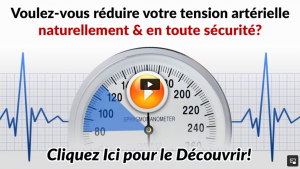The #1 Rated Blood Sugar Formula
Diagnosing High Blood Pressure 2022

Your health care provider will use a blood pressure test to see if you have higher-than-normal blood pressure readings. The reading is made up of two numbers, the systolic number and the diastolic number. These numbers are measures of pressure in mm HG (millimeters of mercury).
High blood pressure does not usually have any symptoms, so the only way to find out if you have it is to get your blood pressure checked. Healthy adults aged over 40 should have their blood pressure checked at least once every 5 years.
Measuring Blood Pressure
Blood pressure is most often measured with a device known as a sphygmomanometer, which consists of a stethoscope, arm cuff, dial, pump, and valve. Blood pressure is recorded as two numbers: the systolic and diastolic pressures.- Systolic blood pressure is the maximum pressure during a heartbeat, when the heart is sending blood throughout the body.
- Diastolic blood pressure is the lowest pressure between heartbeats, when the heart is filling with blood.
Step One
In addition to measuring your blood pressure, your doctor will ask about your medical history (whether you've had heart problems before), assess your risk factors (whether you smoke, have high cholesterol, diabetes, etc.), and talk about your family history (whether any members of your family have had high blood pressure or heart disease).Step Two
If your doctor asks questions that sound embarrassing or overly personal, remember that the information you provide enables them to better establish a diagnosis, or to determine which treatment is most appropriate for you. Never fib in response to questions about alcohol or drug use, sexual history, or other lifestyle matters. Be honest about the extent to which you are taking your prescriptions or following a treatment plan. Withholding the truth can affect the quality of your care and can even lead to a wrong diagnosis.Step Three
Your doctor will also conduct a physical exam. As part of this exam, they may use a stethoscope to listen to your heart for any abnormal sounds or “murmurs” that could indicate a problem with the valves of the heart. Your doctor will also listen for a whooshing or swishing sound that could indicate your arteries are blocked. Your doctor may also check the pulses in your arm and ankle to determine if they are weak or even absent. If you're diagnosed with high blood pressure, your doctor may recommend other tests, such as:- Electrocardiogram (EKG or ECG): A test that measures the electrical activity, rate, and rhythm of your heartbeat via electrodes attached to your arms, legs, and chest. The results are recorded on graph paper.
- Echocardiogram: This is a test that uses ultrasound waves to provide pictures of the heart's valves and chambers so the pumping action of the heart can be studied and measurement of the chambers and wall thickness of the heart can be made.
Questions to Ask Your Doctor
You and your provider can work as a team to lower your high blood pressure. Here are some questions to ask so you can be fully informed.- What should my blood pressure be?
- What kind of diet should I follow to help control my blood pressure?
- How much should I weigh?
- Can you recommend a diet or eating plan to help me reach that weight?
- How much exercise should I be doing?
- How does this medication work?
- Is it generic, and if not, are there generic substitutes available?
- What are the side effects?
- What interactions might happen with the other drugs I’m taking?
- Is there a specific time of day that I should take the medication?
- Should I take it with food or on an empty stomach?






